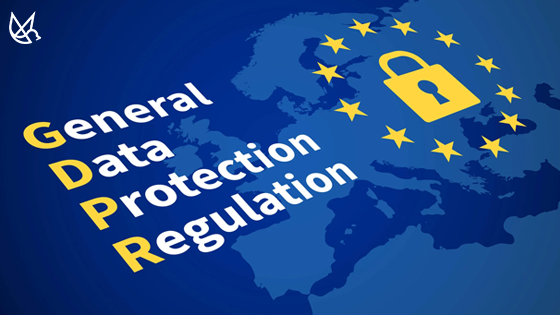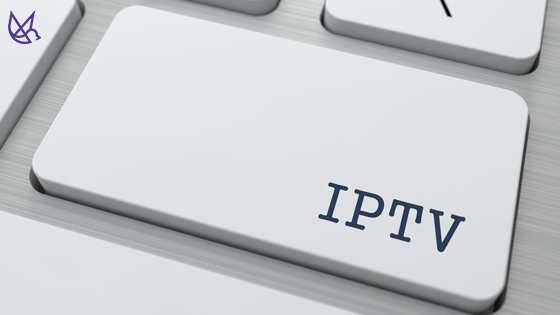Television is no longer tied to cables and satellite dishes. Today, video travels across the same networks that carry your emails and apps. This shift has a name, and that is IPTV. If you have ever opened a live channel on a smart TV, rewound a show on your phone, or watched a movie library through your broadband connection, you have already used it.
According to the source, the global IPTV market was valued at USD 68.78 billion in 2023 and is expected to grow from USD 79.86 billion in 2024 to USD 276.38 billion by 2032, exhibiting a CAGR of 16.8% during the forecast period.
As the proliferation of smartphones has increased, users are relying more on OTT platforms for the purpose of entertainment. IPTV providers are capitalizing on this trend and coming out with different subscription plans and more content.
What is IPTV?
Internet Protocol Television is the delivery of television content over IP networks. Instead of over-the-air antennas, cable coax, or satellite, programs reach viewers through packet-based networking. Internet Protocol Television sends live channels, on-demand libraries, and time-shifted content using the same underlying rules that power the web. Because it runs over managed networks (such as fiber, DSL, or private broadband), providers can control quality, security, and reliability more tightly than the open public internet.
How Does IPTV Compare to OTT Streaming?
IPTV and OTT share a family resemblance, but they are not identical. Here’s a quick, friendly comparison.
Content Delivery Method:
- IPTV typically rides a managed or semi-managed IP network from a telecom or cable operator. Quality can be guaranteed end-to-end.
- OTT (Over-the-Top) travels across the open internet to many device types with best-effort delivery.
Latency:
- IPTV can achieve lower and more consistent latency for live channels because the provider controls more of the path.
- OTT latency depends on CDNs, player buffers, and last-mile conditions.
Content Focus:
- IPTV often bundles broadcast channels, set-top box experiences, and operator services.
- OTT leans toward apps and on-demand catalogs across multiple brands and platforms.
Video Quality:
- IPTV uses managed QoS (quality of service), multicast for scale, and operator tuning to keep picture and sound stable.
- OTT quality varies with device, network congestion, and CDN routing.
Security:
- IPTV typically integrates conditional access systems, encrypted transport, and closed subscriber management.
- OTT uses DRM, encrypted players, and tokenized delivery on the open internet.
When Should You Choose IPTV Over OTT?
Choose IPTV when you want:
- Guaranteed live-channel quality across a managed, high-speed network that ensures stable performance and minimal buffering even during peak viewing hours.
- Consistent latency and synchronized channel zapping for a smooth, broadcast-like experience when switching between channels or accessing interactive features.
- Deep integration with set-top boxes, EPGs, and operator services that provide seamless navigation, personalized recommendations, and unified billing or subscription management.
For app-centric viewing and maximum device reach, OTT makes more sense; for broadcast-grade reliability with tight control, IPTV is often the better fit.
How does IPTV Work?
1. Content transmission:
Content owners provide live feeds or file-based assets to the IPTV headend. Signals are ingested (SDI/HDMI/IP), encoded into streaming formats, and prepared for network transport.
2. Server processing:
Headend servers transcode to multiple bitrates, encrypt streams, package them, and store assets for VOD. Subscriber entitlements and channel lineups are managed here.
3. Streaming to users:
Streams move through the provider’s IP backbone to edge nodes closer to neighborhoods. Multicast is often used for live TV; unicast is used for time-shifted and on-demand.
4. Decoding and display:
Set-top boxes, smart TVs, and mobile apps authenticate, request the right channel, decode the stream, and render video with captions, audio tracks, and EPG data.
What is the Purpose of IPTV?
IPTV brings television into the modern IP world. It lets providers deliver live channels, movies, catch-up TV, and interactive features through a single managed network. It also enables fine-grained user control, flexible bundles, targeted ad insertion, and analytics that help create a smoother, more personalized viewing experience. Moreover, it supports multi-device access, allowing users to watch content anytime, anywhere. With its scalable and secure framework, IPTV helps operators efficiently manage bandwidth, enhance viewer engagement, and future-proof their broadcast infrastructure.
What are the Different Types of IPTV?
1. Live Television:
Real-time channels (news, sports, entertainment) delivered over IP, often using multicast for scale. Examples: operator live channel lineups, in-venue live feeds.
2. Video on Demand (VOD):
Libraries of movies and series you can start anytime. Examples: premium movie catalogs, operator-curated shows.
3. Time-Shifted TV:
Watch recently aired programs on a delay. Examples: catch-up TV (past 24–72 hours), instant replay.
4. Near Video on Demand (NVOD):
Multiple staggered start times of the same movie or event. Examples: linear channels repeating a blockbuster every 15 minutes.
5. Transactional Video on Demand (TVoD):
Pay-per-view content for events or single movies. Examples: big fight nights, early-window film rentals.
What is IPTV Encoder?
An IPTV encoder converts raw video and audio from cameras or contribution feeds into compressed, streamable formats (e.g., H.264/H.265 with AAC). Encoders balance quality and bandwidth while supporting key features like CBR/VBR control, keyframe intervals, and low-latency modes. They’re the first step in turning a studio signal into something every device can play. Additionally, encoders ensure content consistency across multiple resolutions, enabling adaptive bitrate streaming for different network speeds. They also play a vital role in maintaining synchronization between audio and video, ensuring a professional and uninterrupted viewing experience.
What are the Different Types of IPTV Encoders?
1. Hardware encoders:
Appliance boxes with SDI/HDMI inputs, designed for reliability and 24/7 live workflows.
2. Software encoders:
PC or server applications; flexible, scalable, and cloud-friendly.
3. Cloud encoders:
Fully managed encoding in the cloud; easy to scale for pop-up channels or events.
4. Mobile/field encoders:
Portable units with bonded cellular for on-the-go live contribution.
Technical Infrastructure and Content Delivery of IPTV:
End-to-end IPTV typically includes:
1. Acquisition:
Involves capturing SDI, NDI, or IP feeds, receiving satellite downlinks, or ingesting video files from various sources to gather all live and on-demand content inputs.
2. Encoding/Transcoding:
Converts raw video into compressed digital formats, optimizing it into multiple bitrates and resolutions to ensure smooth playback across different devices and network conditions.
3. Packaging & Encryption:
Segments or packetizes video streams and secures them using conditional access systems or DRM to protect against unauthorized access and piracy.
4. Headend/Origin:
Acts as the central control hub that manages content libraries, electronic program guides (EPGs), subscriber entitlements, and distributes prepared streams to the delivery network.
5. Core & Edge Distribution:
Uses a managed IP backbone for efficient data flow, employs multicast for live content delivery, and leverages edge caching to reduce latency and network load.
6. Access Network:
Connects users through fiber, DSL, or 5G last-mile infrastructure, ensuring consistent Quality of Service (QoS) and minimal buffering during playback.
7. Devices:
Delivers content securely to set-top boxes, smart TVs, smartphones, and tablets equipped with protected players and user-friendly interfaces.
8. Monitoring & Analytics:
Continuously tracks QoS (Quality of Service) and QoE (Quality of Experience), issues real-time alerts, and provides performance analytics to enhance reliability and viewer satisfaction.
What are the Key Components of an IPTV System?
- Headend/Origin Servers – Content management, packaging, encryption.
- Encoders/Transcoders – Create adaptive bitrate ladders.
- Conditional Access/DRM – Control who can watch what.
- Subscriber Management – Accounts, entitlements, billing.
- IP Core & Edge – High-throughput routing and caching.
- Multicast Infrastructure – Efficient live channel distribution.
- Set-Top Boxes/Apps – Secure playback and UI/EPG.
- Analytics/Monitoring – Measure health and quality.
What are the Most Popular IPTV Protocols and Standards?
- MPEG-TS over IP & Multicast (IGMP) for live linear channels.
- HLS/DASH for adaptive on-demand and time-shift delivery.
- RTSP/RTMP/SRT for contribution or niche workflows.
- DRM (Widevine, PlayReady, FairPlay, and WisePlay) or conditional access for protection.
- AES-128/CMAF/LL-HLS options to reduce latency and improve security.
These choices shape both quality and security in IPTV deployments.
What are the Benefits of IPTV?
1. Reliable live TV quality:
Ensures consistent performance across managed networks with Quality of Service (QoS) controls, minimizing buffering and signal interruptions.
2. Flexible content models:
Supports multiple formats such as live channels, Video on Demand (VOD), time-shifted programs, Near Video on Demand (NVOD), and Transactional Video on Demand (TVOD), catering to diverse viewing preferences.
3. Personalization:
Delivers tailored recommendations, user profiles, and curated watchlists that enhance viewer engagement and satisfaction.
4. Better control:
Offers greater oversight over security, content access, user authentication, and supported devices through centralized management systems.
5. Scalable delivery:
Uses multicast for efficient live channel distribution and adaptive bitrate (ABR) for smooth on-demand streaming, ensuring stable playback even during peak hours.
6. Monetization opportunities:
Enables flexible revenue models through subscription bundles, targeted ads, pay-per-view events, and promotional campaigns that increase profitability.
What are the Common CyberSecurity Concerns in IPTV?
Even managed systems face threats:
1. Content piracy:
Unauthorized restreaming of live channels, credential sharing between users, and account takeovers that bypass subscription limits or payment systems.
2. Key/License theft:
Attackers attempting to steal DRM encryption keys, license files, or access tokens from servers to decode or redistribute protected streams.
3. Stream interception:
Hackers capture unencrypted or weakly secured data streams in transit, leading to unauthorized viewing or redistribution of content.
4. Device compromise:
Rooted or jailbroken devices bypassing DRM, allowing users or attackers to record, copy, or manipulate protected video content.
5. API abuse:
Malicious users exploiting weak authentication to steal tokens, alter user entitlements, or trigger unauthorized service requests.
6. Network attacks:
Distributed denial-of-service (DDoS) attacks on origin and edge servers, routing manipulation (BGP hijacking), or bandwidth exhaustion, disrupting service availability.
How Can IPTV Network Security Be Strengthened?
Securing IPTV networks requires a layered and proactive approach. Because Internet Protocol Television operates over IP infrastructure, it faces many of the same risks as enterprise IT systems, data breaches, piracy, unauthorized access, and service disruption. Strengthening IPTV network security involves protecting every stage of the delivery chain, from content encoding and transmission to playback on end-user devices.
The following measures represent practical, enterprise-grade safeguards (the kind a specialist provider like DoveRunner focuses on):
1. End-to-end encryption:
Secure transport (TLS), encrypted segments (AES-128/CMAF), and hardened key exchange.
2. Strong DRM/Conditional Access:
Per-subscriber entitlements, short-lived licenses, output protection, and device integrity checks.
3. Application shielding:
Tamper detection, anti-debugging, emulator checks, and root/jailbreak detection in player apps.
4. Tokenized delivery:
Time-bound tokens, signed URLs, and just-in-time manifests.
5. Watermarking:
Forensic watermarking and session-level watermarking embed invisible identifiers into each video stream. If a leak occurs, these marks can trace the specific user, device, or session responsible. This creates a strong deterrent against piracy and content redistribution.
6. Zero-trust APIs:
All APIs in the video delivery chain operate on a zero-trust model — assuming no user or device is inherently trusted. Security measures include mutual TLS (mTLS) for verified communication, OAuth 2.0 for secure access tokens, scope-limited API keys to minimize exposure, and anomaly detection to identify unusual behavior or access patterns.
7. Active monitoring:
Continuous monitoring systems track both Quality of Service (QoS) and Quality of Experience (QoE) using real-time dashboards.
What are the Legal Considerations and Compliance Requirements for IPTV?
Understanding the legal side is as important as asking is IPTV legal in your region. Here’s a concise checklist:
Copyright & Licensing:
- Obtain distribution rights for all channels and assets.
- Respect geo-restrictions, windows, and contractual limits.
- Keep audit trails for license fulfillment.
Data Protection & Privacy:
- Collect only necessary user data; follow consent rules.
- Comply with applicable laws (e.g., GDPR-style principles, local privacy acts).
- Secure storage, encryption at rest/in transit, and breach response plans.
Consumer Protection:
- Clear terms of service, pricing, and cancellation policies.
- Transparent parental controls and content ratings.
- Network & Security Compliance
- Apply recognized standards for encryption and secure protocols.
- Conduct regular pen tests and third-party audits.
Anti-Piracy Measures:
- Use DRM, license hardening, watermarking, and session tokens.
- Takedown workflows for illicit restreams.
DoveRunner combines DRM, encryption, and secure streaming protocols so businesses stay compliant while protecting users and content.
What are the Future Trends in IPTV?
Technology and infrastructure:
- 5G networks: Ultra-fast, low-latency last-mile for mobile and fixed wireless access improves live channel stability and interactive features in IPTV apps.
- Edge computing: Moving packaging, ad-decisioning, and personalization closer to viewers lowers latency and improves resilience.
- Cloud solutions: Cloud-based systems allow operators to launch new channels quickly, handle large audiences easily, and cut down on the need for complex on-site equipment.
Content and user experience:
- AI-driven personalization: Smarter recommendations, dynamic home screens, and predictive pre-fetch reduce churn.
- Immersive experiences: Multi-angle sports, 360° video, and synchronized stats enrich live channels.
- Multi-platform compatibility: Seamless viewing across set-top boxes, smart TVs, phones, and in-car screens.
Security and business:
- Advanced Digital Rights Management (DRM): Fine-grained licenses, watermarking, and device integrity checks.
- AI-based Security Protocols: Behavioral analytics spot credential sharing, bot activity, or token abuse.
- Monetization strategies: Hybrid bundles, FAST-style channels, targeted ad insertion, and loyalty programs.
Conclusion
If you began this guide wondering what is IPTV, you now understand that it’s simply television delivered through internet protocols, reliable, flexible, and built for the future. You’ve also gained a clear idea of how does IPTV work, why many viewers prefer IPTV over traditional OTT platforms, and how providers ensure content protection and legal compliance.
When it comes to questions like is IPTV legal, is IPTV legal in the USA, or is IPTV legal in India, the answer always centres on one principle: legal IPTV services operate with proper broadcasting rights, secure streaming, and licensed content. Before subscribing, always verify what IPTV service is being offered, check its licensing and security measures, and choose a platform that guarantees a smooth, safe, and smarter television experience. With managed networks, encryption, DRM, smart apps, and cloud agility, IPTV brings the best of broadcast and the web together. Choose wisely, stay within the law, and make security part of your setup from day one.
FAQs on IPTV
What is IPTV service?
IPTV service is a provider’s bundle of live channels, on-demand libraries, and features delivered over IP networks. When people ask what is IPTV service, they mean the package you subscribe to for TV over broadband, including apps, set-top boxes, and EPGs.
Is IPTV legal in the USA?
Yes, when properly licensed. The question – is IPTV legal in the USA depends on rights. Authorized providers with content licenses are legal; unlicensed restreams are not. Always verify the provider’s rights.
Is IPTV legal in India?
As with any market, is IPTV being legal in India comes down to licensing, telecom rules, and content rights. Licensed operators offering Internet Protocol Television within local regulations are legal; pirate streams are not.
Is IPTV secure?
IPTV can be very secure with encryption, DRM/conditional access, secure apps, and tokenized delivery. Weak or unlicensed services often skip these protections, exposing users and content.
How does content piracy affect IPTV Services?
Piracy erodes revenue, degrades network performance, and can put user data at risk. Providers fight it with DRM, watermarking, tokens, and takedown workflows. This is also why teams ask, is IPTV legal before partnering with any platform.
How to choose the best IPTV service?
Look for proper licensing, stable quality on your connection, good device support, clear pricing, strong security (DRM/encryption), and reliable customer support. If you wonder what is IPTV service quality, test free trials and check channel reliability.
What are the most popular IPTV providers?
Reputable IPTV providers are typically telecom or cable operators and established media companies that clearly publish licensed channel lineups. Choose services with transparent rights and strong security.
Is IPTV the future of TV?
IPTV is a major part of TV’s future because it merges broadcast reliability with internet flexibility. Managed IP delivery, 5G, and cloud headends will keep improving quality, security, and choice.




